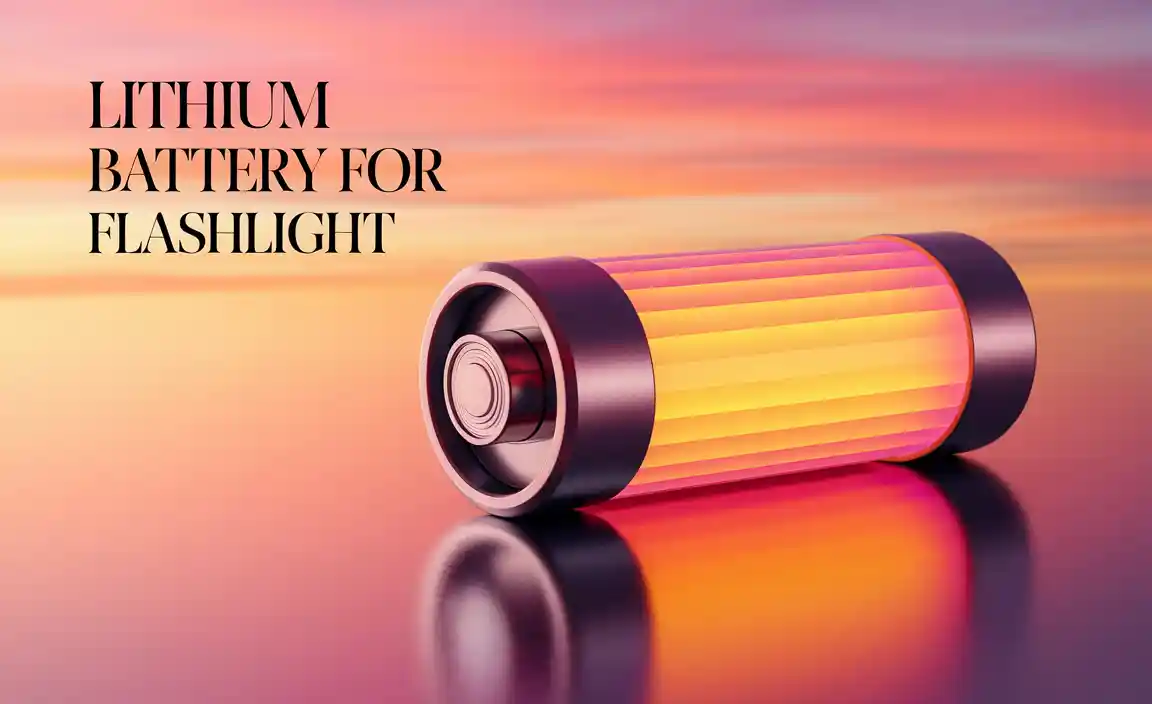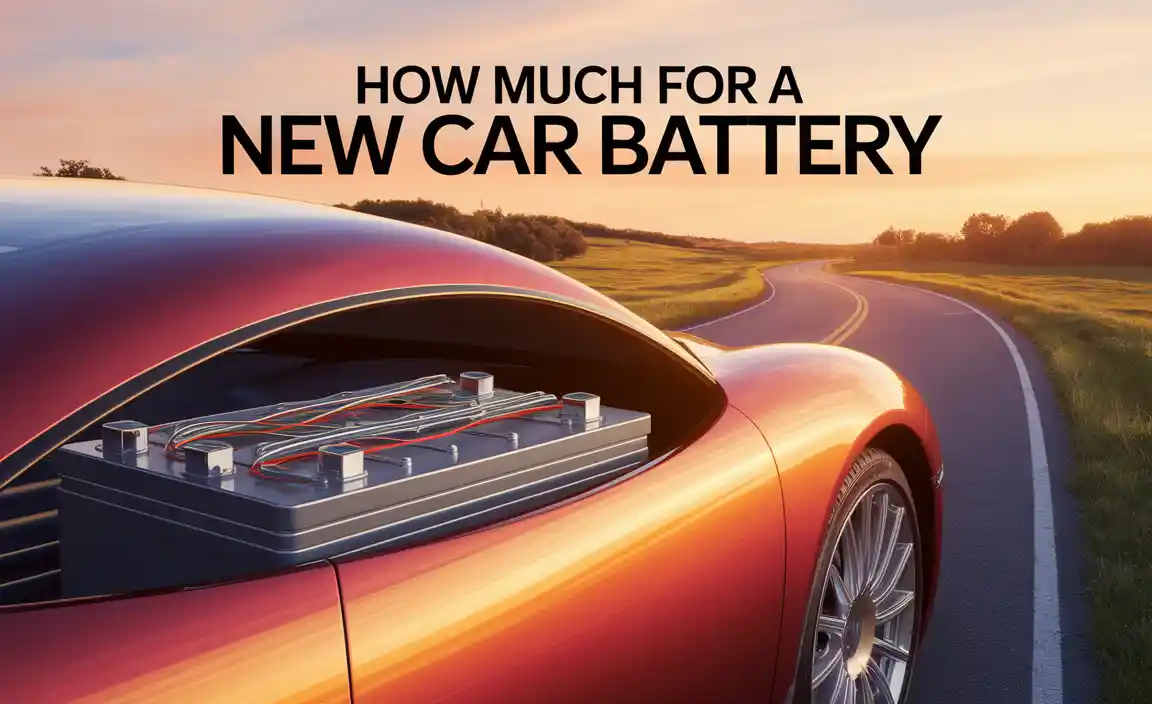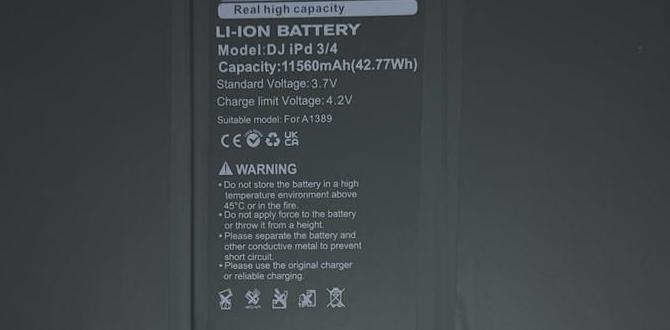Have you ever wondered how the batteries for electric cars are made? It’s a process that combines science, technology, and a bit of magic. Imagine a giant puzzle where each piece plays a crucial role in creating a powerful battery.
Did you know that electric car batteries are often made from materials we find in nature? For instance, lithium, cobalt, and nickel are key ingredients. These materials come together to store energy and help cars move smoothly.
The next time you see an electric vehicle, remember: its power comes from a battery made through an exciting process. Each step is important, from mining the raw materials to putting the battery together. So, let’s dive deeper and explore the fascinating journey of how batteries for electric cars are made!
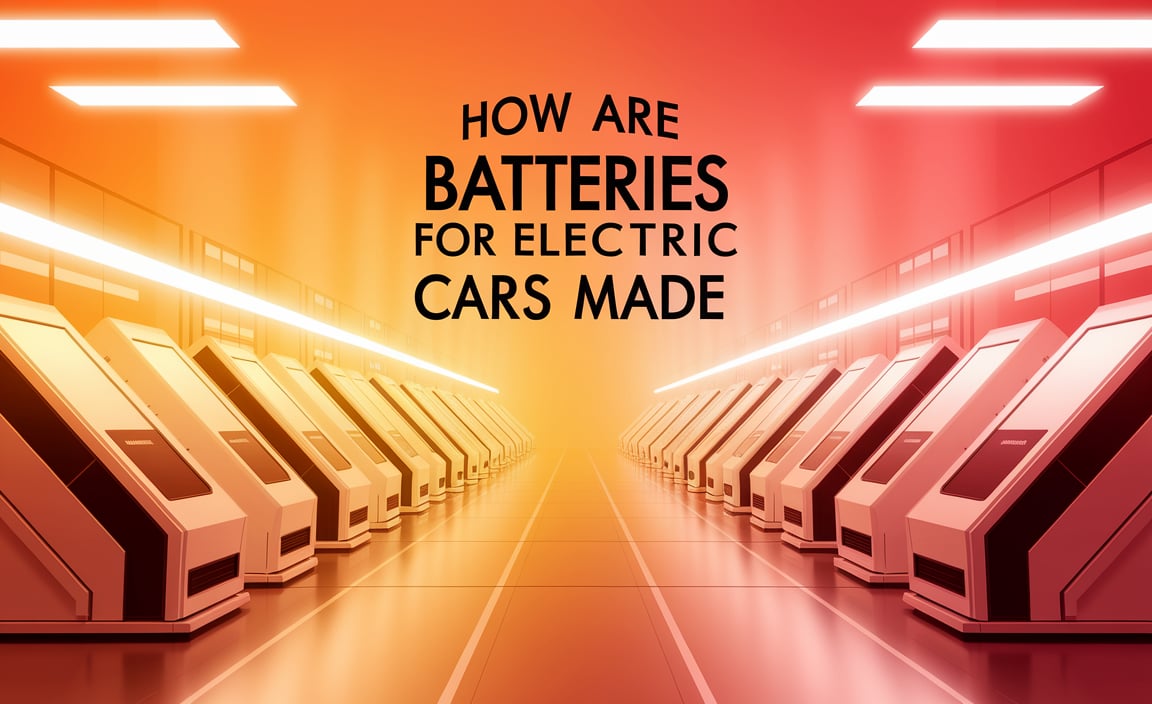
The Incredible Journey of Electric Car Batteries: From Earth to Road
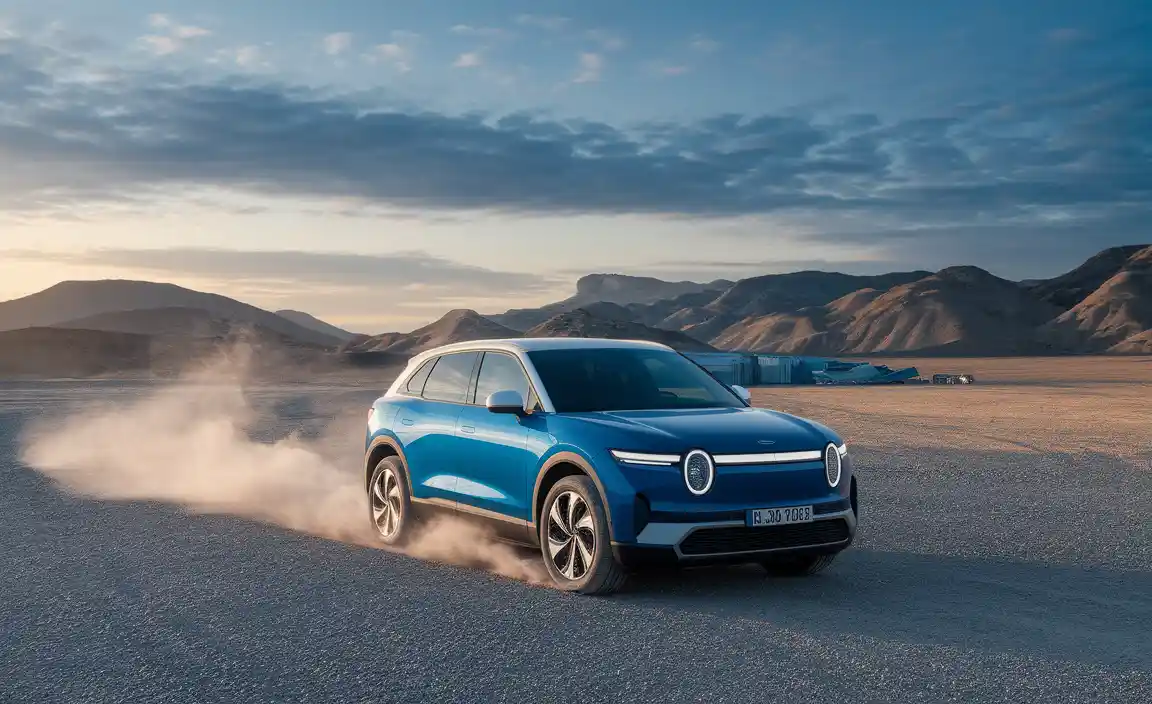
Making batteries for electric cars is a fascinating process. First, raw materials like lithium, cobalt, and nickel are gathered. These elements are transformed into battery cells through mixing, heating, and pressing. Have you ever wondered how your phone powers up so quickly? It’s similar! Batteries are assembled into packs, ready to power vehicles. This technology is continually improving, making cars more efficient and eco-friendly. Each step helps drive us toward a cleaner future.
Understanding Electric Car Batteries
Types of batteries used in electric cars. Importance of battery technology in EV performance.
Batteries are the heart of electric cars. They help the car run smoothly and efficiently. Most electric cars use lithium-ion batteries. These batteries are good because they are light and store a lot of power. Better battery technology means longer trips without needing to charge. It also allows for faster charging times. More advanced batteries can last longer and perform better. This helps make electric cars more popular among drivers.
What types of batteries are used in electric cars?
- Lithium-Ion Batteries: Common and efficient.
- Nickel-Metal Hydride: Used in some hybrids.
- Solid-State Batteries: Promising future technology.
The Raw Materials of Electric Car Batteries
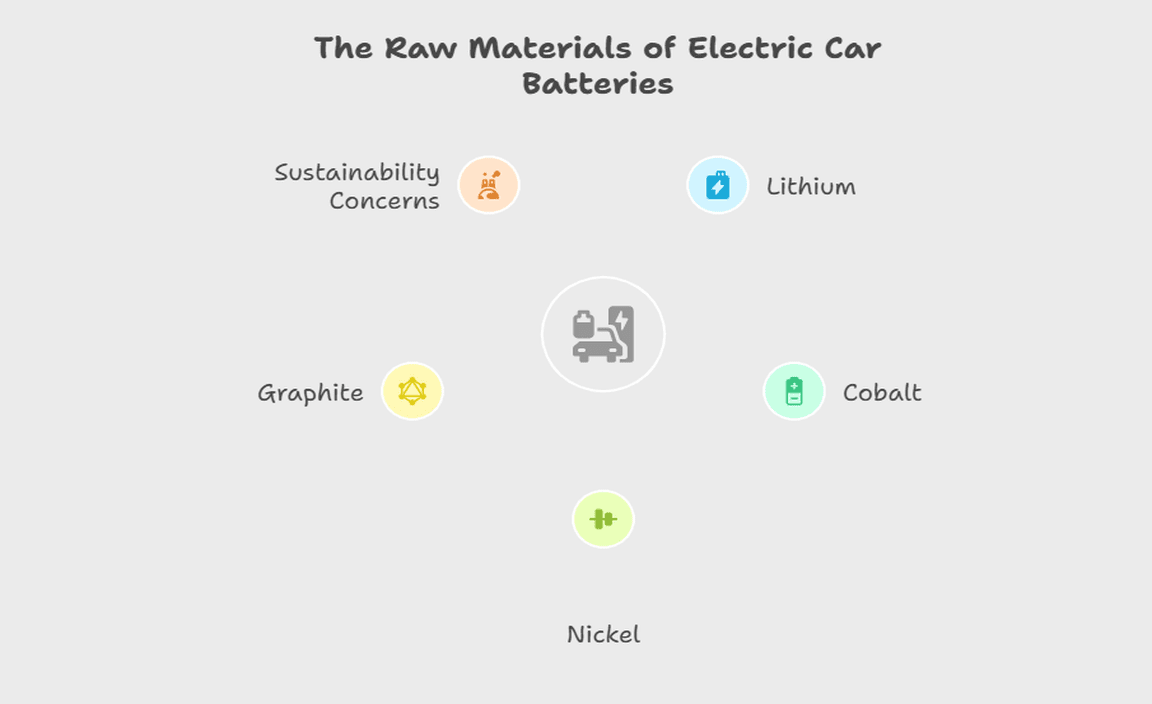
Key materials: lithium, cobalt, nickel, and graphite. Sourcing and sustainability concerns for battery materials.
Electric car batteries need special materials. The main ingredients are:
- Lithium – Makes energy storage easy.
- Cobalt – Helps batteries last longer.
- Nickel – Increases the battery’s power.
- Graphite – Conducts electricity well.
Sourcing these materials raises some important questions. Mining can harm the environment and local communities. We must think about sustainability. It is crucial to find better ways to get these materials.
Why is sourcing battery materials important?
Sourcing battery materials is important because it affects the planet and people’s lives. Proper mining practices can support communities and protect nature.
Quality Control in Battery Production
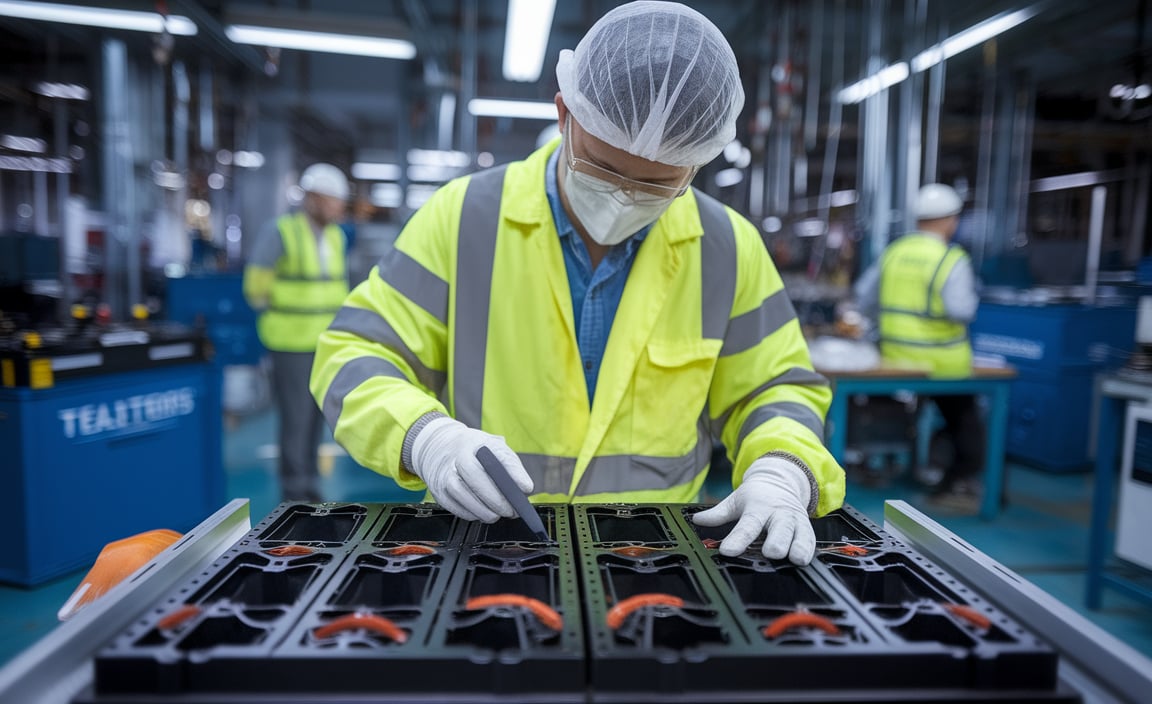
Importance of testing and standards in battery manufacturing. Common defects and how they are addressed.
Testing batteries for electric cars is like checking if candy is sweet before handing it out. Quality control is super important! It ensures that batteries meet high standards and don’t explode—yikes! Common defects include weak connections and leaks. To fix these issues, manufacturers use strict testing methods. They check each battery like it’s a precious gem, ready to take on the road!
| Common Defects | Solutions |
|---|---|
| Poor connections | Rework or replace |
| Leaking fluids | Sealing checks |
| Overheating | Cooling system upgrades |
The Role of Recycling in Battery Life Cycle
Methods of battery recycling. Benefits of recycling for sustainability and resource recovery.
Recycling plays a big part in making batteries last longer. Instead of tossing old batteries aside, they can be recycled using several methods, like pyrometallurgical and hydrometallurgical processes. These methods help recover valuable materials like lithium and cobalt. Recycling is like a superhero for the planet, giving a second life to metals, reducing waste, and cutting down pollution. Want to know what’s even cooler? Recycling saves energy! It takes less energy to reuse materials than to extract new ones. So, recycling is not just smart; it’s a fun way to be eco-friendly!
| Recycling Method | Benefits |
|---|---|
| Pyrometallurgical | High recovery rates for metals |
| Hydrometallurgical | Lower environmental impact |
Future Trends in Battery Technology
Innovations in battery chemistry and design. Predictions for the future of electric car batteries.
Battery technology for electric cars is changing fast. New ideas in battery chemistry and design are making them better. For example, solid-state batteries might replace old types. These batteries can store more energy and charge faster. Companies are also looking at using recycled materials to make batteries. This helps the environment, too.
By 2030, experts predict that batteries will be lighter and cheaper. They might last even longer than before. Innovations could lead to longer drives and faster charging times. Exciting times are ahead for electric cars!
What are the advancements in battery technology?
Innovations like solid-state batteries stand out. They promise safer and more efficient energy storage.
Future Predictions for Electric Car Batteries
- Batteries will use more recycled materials.
- They will charge faster than today.
- Expect lighter batteries that cost less.
Challenges in Battery Production
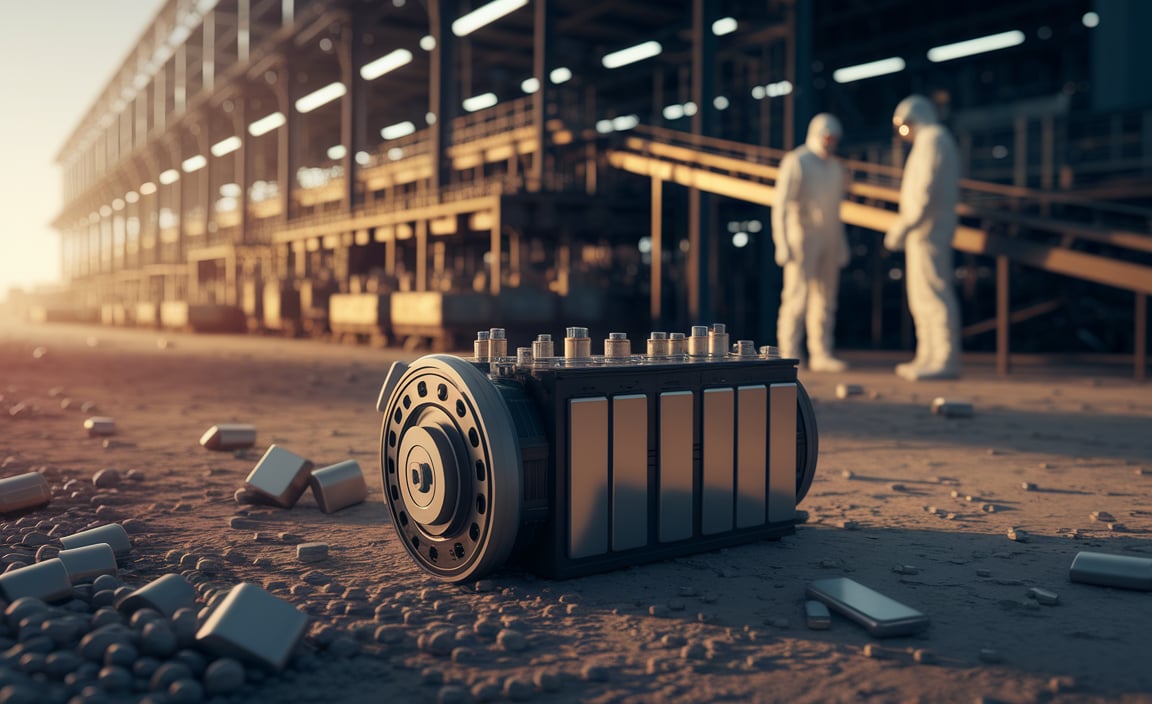
Economic and environmental challenges. Impact of supply chain issues on battery availability.
Producing batteries comes with many challenges. Making them can be expensive and hard on the environment. Materials needed like lithium and cobalt are tricky to find. Supply chain problems can slow down battery production. This means less availability for electric cars. Here are some key challenges:
- High costs of raw materials
- Environmental impact of mining
- Shipping delays affecting supply
Overall, these problems can make batteries for electric cars harder to get. Keeping up with demand is a constant struggle.
What are the economic challenges in battery production?
The economic challenges involve high costs of raw materials and the need for skilled labor. These factors make battery production tough on the budget.
What environmental impact do batteries have?
Batteries can harm nature. Mining for materials can cause land destruction and pollution, affecting local ecosystems.
How do supply chain issues impact battery availability?
Delivery problems can slow down battery production. Shipping delays can reduce the number of batteries available for electric cars.
Impact of Battery Production on the Environment
Emissions and ecological footprint of battery manufacturing. Mitigation strategies and cleaner production methods.
Making batteries for electric cars can hurt the environment. Battery production generates harmful emissions and leaves a large ecological footprint. Some of these emissions come from mining materials and manufacturing processes. To lessen this impact, companies are using cleaner methods and better technology. By choosing renewable energy and recycling materials, they aim to reduce pollution. This helps to protect our air and water. Every bit counts for a cleaner future!
What are the impacts of battery production?
Battery production can cause air pollution and lead to climate change. This affects all living things on Earth.
Mitigation Strategies
- Use renewable energy in factories.
- Recycle old batteries instead of throwing them away.
- Improve technology to use less energy.
Conclusion
In summary, electric car batteries are made using raw materials like lithium and cobalt. Manufacturers combine these materials into cells, which power the car. You can learn more about battery recycling and environmental impact. Understanding how these batteries work helps you appreciate electric cars even more. Keep exploring this exciting technology and see how it shapes our future!
FAQs
What Are The Primary Materials Used In The Production Of Electric Car Batteries, And How Are They Sourced?
Electric car batteries mainly use lithium, cobalt, and nickel. We get lithium from special rocks and saltwater. Cobalt often comes from mines in countries like the Democratic Republic of Congo. Nickel is mined from the earth too. These materials are important because they help the batteries store energy.
What Manufacturing Processes Are Involved In The Construction Of Lithium-Ion Batteries For Electric Vehicles?
Making lithium-ion batteries for electric vehicles involves several steps. First, we mix materials like lithium, nickel, and cobalt to create a paste. Then, we spread this paste on thin sheets of metal to form the battery’s layers. After that, we roll up the sheets and put them in a case. Finally, we charge the battery to make sure it works well for electric cars.
How Do Battery Recycling Practices Impact The Sustainability Of Electric Car Battery Production?
Battery recycling helps us reuse important materials from old batteries. This means we don’t need to dig up as many new materials. Recycling also reduces waste and pollution. By recycling, we can make electric car batteries more eco-friendly and less harmful to the planet. It’s like giving a second life to old batteries!
What Advancements In Technology Are Being Developed To Improve The Efficiency And Longevity Of Electric Car Batteries?
Scientists are working on new types of battery materials, like solid-state batteries. These can hold more energy and last longer. Researchers are also improving charging methods so batteries can charge faster. Lastly, they are using better cooling systems to keep batteries from getting too hot. All of this helps make electric cars more efficient and lets them run longer!
How Do Regulations And Environmental Considerations Influence The Battery Manufacturing Industry For Electric Vehicles?
Regulations and environmental rules help keep our planet safe. They require battery makers to use safer materials. This means we get cleaner batteries that don’t harm nature. When companies follow these rules, they help make electric vehicles better for everyone. So, we all benefit from healthier air and a cleaner world.
Resource:
-
Battery Material Sourcing Issues: https://www.nature.com/articles/s41586-021-03895-7
-
Battery Recycling Technologies: https://www.energy.gov/eere/vehicles/articles/fact-971-august-22-2022-recycling-lithium-ion-batteries-electric-vehicles
-
Solid-State Battery Innovations: https://www.scientificamerican.com/article/the-promise-and-challenges-of-solid-state-batteries/
-
Environmental Impact of EV Batteries: https://www.epa.gov/greenvehicles/electric-vehicle-myths#emissions
{“@context”:”https://schema.org”,”@type”: “FAQPage”,”mainEntity”:[{“@type”: “Question”,”name”: “What Are The Primary Materials Used In The Production Of Electric Car Batteries, And How Are They Sourced? “,”acceptedAnswer”: {“@type”: “Answer”,”text”: “Electric car batteries mainly use lithium, cobalt, and nickel. We get lithium from special rocks and saltwater. Cobalt often comes from mines in countries like the Democratic Republic of Congo. Nickel is mined from the earth too. These materials are important because they help the batteries store energy.”}},{“@type”: “Question”,”name”: “What Manufacturing Processes Are Involved In The Construction Of Lithium-Ion Batteries For Electric Vehicles? “,”acceptedAnswer”: {“@type”: “Answer”,”text”: “Making lithium-ion batteries for electric vehicles involves several steps. First, we mix materials like lithium, nickel, and cobalt to create a paste. Then, we spread this paste on thin sheets of metal to form the battery’s layers. After that, we roll up the sheets and put them in a case. Finally, we charge the battery to make sure it works well for electric cars.”}},{“@type”: “Question”,”name”: “How Do Battery Recycling Practices Impact The Sustainability Of Electric Car Battery Production? “,”acceptedAnswer”: {“@type”: “Answer”,”text”: “Battery recycling helps us reuse important materials from old batteries. This means we don’t need to dig up as many new materials. Recycling also reduces waste and pollution. By recycling, we can make electric car batteries more eco-friendly and less harmful to the planet. It’s like giving a second life to old batteries!”}},{“@type”: “Question”,”name”: “What Advancements In Technology Are Being Developed To Improve The Efficiency And Longevity Of Electric Car Batteries? “,”acceptedAnswer”: {“@type”: “Answer”,”text”: “Scientists are working on new types of battery materials, like solid-state batteries. These can hold more energy and last longer. Researchers are also improving charging methods so batteries can charge faster. Lastly, they are using better cooling systems to keep batteries from getting too hot. All of this helps make electric cars more efficient and lets them run longer!”}},{“@type”: “Question”,”name”: “How Do Regulations And Environmental Considerations Influence The Battery Manufacturing Industry For Electric Vehicles? “,”acceptedAnswer”: {“@type”: “Answer”,”text”: “Regulations and environmental rules help keep our planet safe. They require battery makers to use safer materials. This means we get cleaner batteries that don’t harm nature. When companies follow these rules, they help make electric vehicles better for everyone. So, we all benefit from healthier air and a cleaner world.”}}]}

